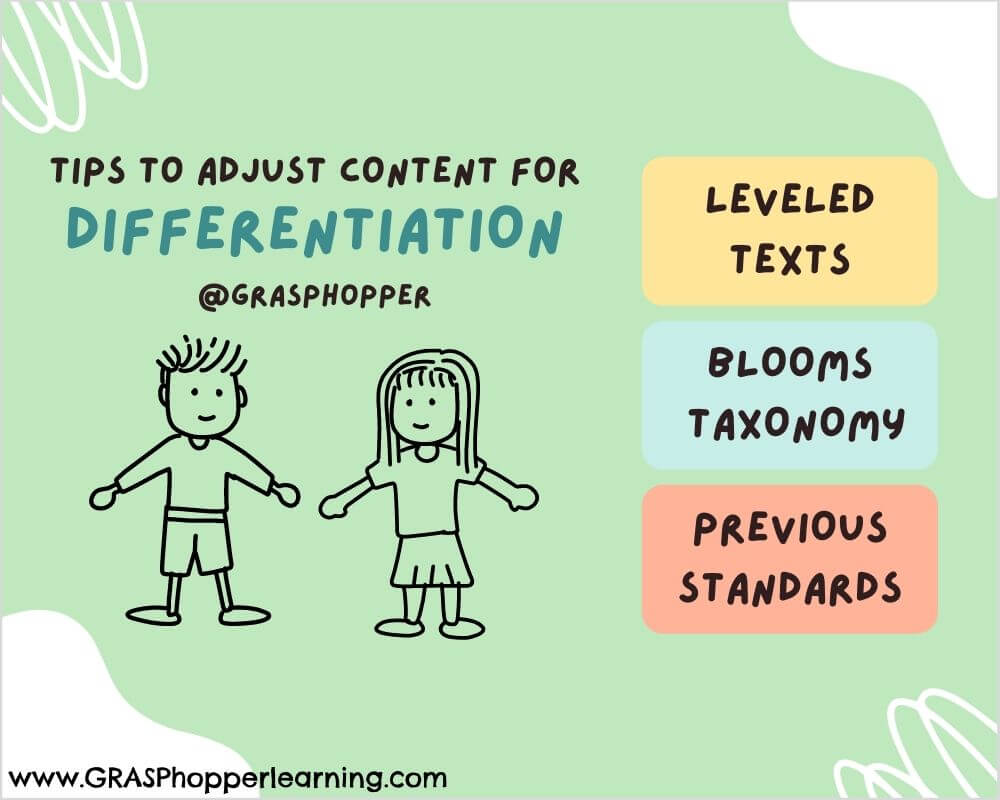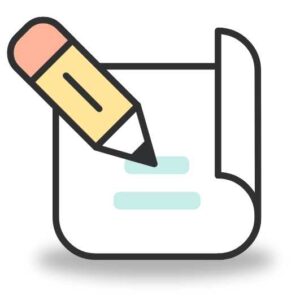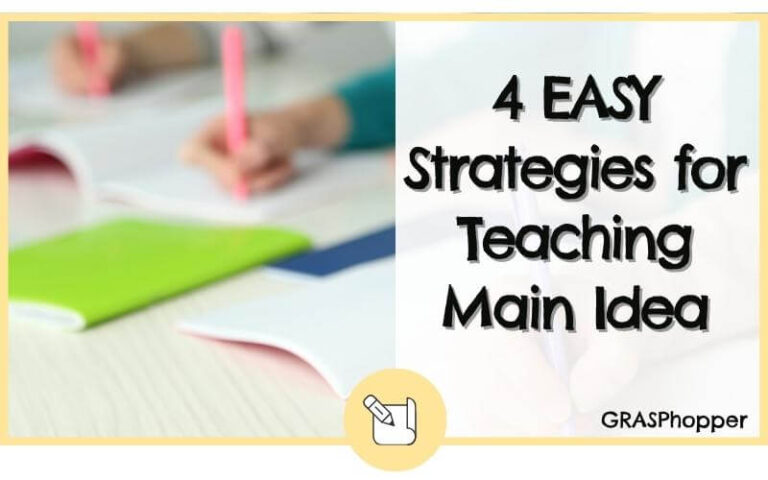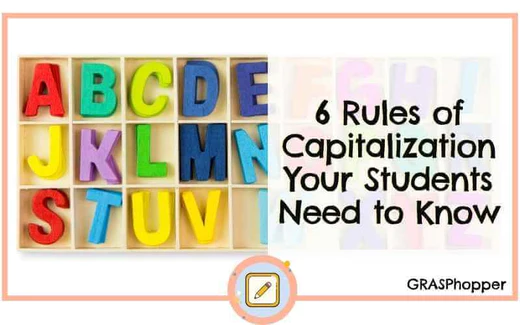Chances are that you are no stranger to the word differentiation, and you have likely been asked to differentiate your ELA instruction. In education, this word is thrown around a lot, but what exactly does it mean to have differentiated ELA instruction? How do you plan a differentiated lesson?

What is differentiation?
Before we can talk about planning with differentiation, we first have to talk about what differentiation is. Differentiation is the practice of planning your instruction to meet the needs of various learners in your classroom.
Sometimes differentiation is confused with other teaching practices. For example, differentiation does not mean changing a child’s learning goals. Every student in your classroom has the same goal for a particular lesson (for example, writing in a complete sentence), but each student may have a different need in order to accomplish that goal.
Differentiation also does not replace any learning accommodations a student has. Following a student’s IEP or 504 plan does not mean you are differentiating. Instead, these two things should exist together: differentiation + accommodations = successful learning.

On paper, differentiation can seem like a really intimidating process. How can you possibly meet the needs of all of your students without spending hours planning for each lesson?
How do you plan differentiated reading instruction?
To plan a differentiated literacy lesson, you want to first identify your students’ needs. This is commonly done through some type of assessment, formative or summative. Then, you want to analyze this data and determine the gaps that need filling.
Once you know what areas your students need support in, we recommend grouping these students. Groups are ideal for differentiating because it’s very hard to meet with each student one-on-one on a regular day. Of course, you can adjust these groups as you continue to assess your students’ needs.
We know that planning for differentiation can be overwhelming, even with small groups. There are some simple ways to adjust your content, so that it supports your students.

1. Leveled Texts – A simple differentiation technique is leveled texts. Your students can focus on the same reading or concept, but by leveling the text, they can access the material at their level. There are some websites like NewsELA that make finding leveled texts really simple.
2. Bloom’s Taxonomy – Another way to differentiate is by asking students questions using Bloom’s Taxonomy: remembering, understanding, applying, analyzing, evaluating, and creating. Work your way from lower order to higher order thinking skills. Some students may not be able to move past a certain level, so you can help build their critical thinking starting from where they are right now.
3. Previous Standards – If you find that a student is struggling with a particular skill, it may be helpful to view the standard from years prior. For instance, in fifth grade students may need to read an argumentative text and explain how the author used facts for and against an argument. In fourth grade, however, students only need to determine the facts for the argument. You can start with the fourth grade standard in this case.
One resource we like to use with students covers paragraph writing. In this activity, we cover a variety of paragraph writing topics such as topic sentences, supporting details, and transition words. However, we differentiate each activity by including leveled paragraphs and differentiated question types (some are open ended vs multiple choice, some are lower vs higher order thinking).
Check out this differentiated paragraph writing resource to help your students succeed.
How can I differentiate instructional activities?
Now that you have a clear idea of what differentiated instruction looks like, we wanted to give you some concrete differentiation techniques that you can use with any lesson.
First, vary the activities students are using to learn the content. By giving students various ways to take in the information, you are helping them absorb the skills in a way that works for them. Here is an example of what that might look like for a lesson on retelling:
For visual learners, students can watch this teaching video on how to retell a story. They can watch as a whole class or independently. In fact, we have a whole YouTube channel of student-friendly ELA videos that students can watch here.
For auditory learners, have students explain to each other what retelling means or the steps to retelling a story. This can be with a partner or a small group.
For kinesthetic learners, have students engage with a manipulative or in a movement activity. They may be sorting pictures or written parts of a story into the correct order using their retelling strategies.
Second, you want to think about how you will deliver your differentiated instruction to students. One of the most common ways is through small group instruction or meeting one-on-one with students. However, differentiated instruction doesn’t always have to look like this!
You can also differentiate literacy activities by changing how you ask questions. For students who struggle to organize their thoughts into a cohesive response, you might use multiple-choice questions. Students who are displaying higher-order thinking can benefit from answering an open-ended question independently. There is even a middle-of-the-road opportunity where you provide sentence starters to help students express complete, open-ended responses.
How can I differentiate summative assessments?
Lastly, you want to think about what your students will do to show mastery or understanding of the content. If you want to stick to a standard test, you again want to make sure you vary your question types (multiple choice vs open-ended), and have both higher and lower order thinking questions (Bloom’s Taxonomy).
You might also consider giving students a project to show mastery. For example, students can research information and create a summary based on what they find. To differentiate, some students may receive sentence stems for writing. Other students may have specific websites given to them to read through or even pre-printed, leveled information to read.

Ultimately, our goal is to help you work smarter, not harder. We know that differentiating your literacy instruction can be a challenge, but by leveling texts, varying your question types, and meeting with students in groups, you can begin to make steps toward meeting all of your students’ needs.










